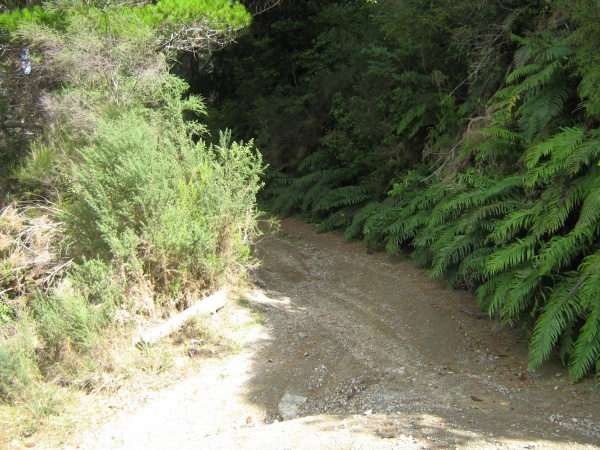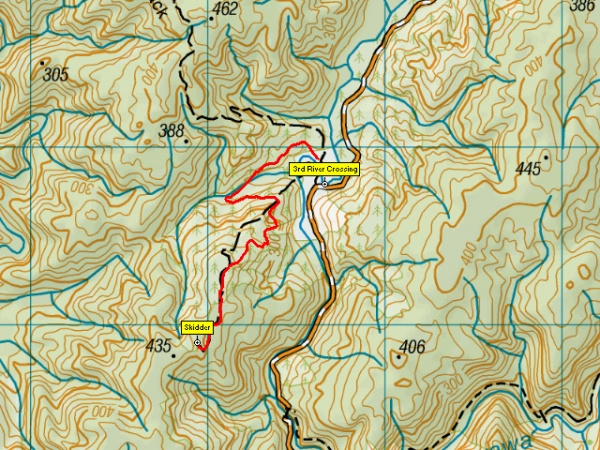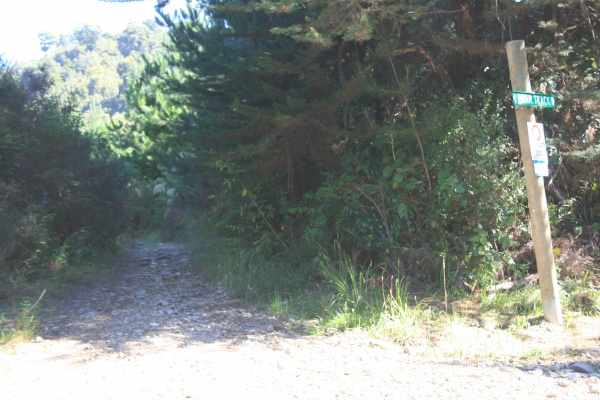ARAC Executive
An overview of the Akatarawa Recreational Access Committee
We recently held our AGM and is noted that perhaps the full functions of ARAC are not as well understood as they should be – and likely that is much of our fault.
Rather than bore people with a complete history of ARAC, that is attached below for any interested in reading that far. But for now, here is just an overview of how ARAC functions as of now,
ARAC represents a disparate group of outdoor recreational interests in a variety of locations.
The sporting codes we represent include:
• Motorbikes (our largest sporting code)
• Quads (2nd largest)
• 4WDs
• Mountain Bikes
• Hikers
• Horse Riders
• Hunters
The success of ARAC has been in its ability to provide Land Managers with a single point of contact when dealing with a multiplicity of users!
As for our structure, the Executive body of ARAC is made up of a group of elected officers, together with a representative or delegate from each member club. Each of the executive has a single vote and speaking right on any issue. The Chair does not hold a casting vote.
But in reality, the Executive does nothing in the day-to-day operation of ARAC. It simply holds an oversight role of its subcommittees – where all the real work is done.
Indeed, by constitution, the Executive are specifically forbidden from interfering in the operation of its subcommittees unless they act in breach of the constitution or the law. Other than that subcommittees operate entirely at their own discretion, manage their own funds, actions, projects etc.
So what does the Executive actually do? Well very little. The Executive holds the AGM, prepares annual accounts by merging the returns from its subcommittees and as a Registered Charity, filing those with the Charities Service.
So the subcommittees do all the work? YES. And just who are they?
Currently we have four subcommittees:
• Akatarawa – responsible for the relationship with GW and management within the forest.
• Waiotauru – manages the relationship with DOC and maintains both Odlin’s Road and the Waiotauru Hut
• Wairarapa – works with DOC to manage and maintain the Aorangi Crossing – aka Sutherlands Track.
• Wellington South Coast. Working with WCC to represent the local recreational community. This group is primarily headed by CCVC member Barry Insul, with nearly all tasks carried out by CCVC and guests.
It is here the real work is done, and if anyone wants to help with voluntary work, policy or direction, then here is where real influence and input can be made.
At the recent AGM, ARAC received a nomination for Frank Allan as President. We don’t have a President, but it was later corrected to be for the position of Chair. Whilst that nomination was unsuccessful, an invitation was extended to Frank to be co-opted to the Executive as a Communications Officer with the intention being he assist in spreading better communications between the various operating groups and the membership base and their members.
Watch this space.
A brief history of ARAC
During the winter of 1995, GW placed a 6-week closure on the whole of the Akatarawa Forest citing “Supersaturated Tracks”. Whilst unhappy, the overall motorised recreational community cooperated. Hikers and Mountain Bikers were not affected.
The following winter of 1996, this became a 12-week closure, with again Hikers and MBs unaffected.
Yet in 1997, an indefinite closure was announced – this created a veritable firestorm of resentment and culminated in a certain Damon Gruenwald together with a few others banding together and calling a public meeting on 26th May that year. Over 200 people attended the standing-room-only event at Belmont Memorial Hall.
Give them their due, GW attended with both the Mayor and Plantation Manager attending. Boisterous but nonetheless constructive, it was agreed that a group of representatives would be formed to spearhead discussions with GW on an ongoing basis.
From here, the group founded the name Akatarawa Recreational Access Committee and began a series of internal meetings before entering a dialogue with GW.
An independent arbiter was funded by GW in the form of Corydon Consultants, and very many meetings spanning more than a year were undertaken. The nett outcome was the production of a document “Motorised Recreation Guidelines” – this document eventually was incorporated into GW’s 10-year plan.
Amongst other things, it introduced the concept of trip leaders, training and approvals etc that are still in force to this date.
So much for Akatarawa, but what of the others?
In around 1999, DOC officers independent of the Conservancy decided to stop vehicles accessing Waiotauru Road and the valley (aka Odlin’s) by way of blasting a portion of the track just before Renata Saddle. No consultation was given and the public had no opportunity for input before this was done. Indeed, the Conservation Management Strategy (CMS) specifically allowed vehicles on Waiotauru Road.
DOC were less than impressed when a small group of determined individuals effected repairs and had the road reopened again after only a few short days.
Threatening more explosives, a delegation from ARAC began the discussion with DOC Waikanae and also involved the Wellington Conservancy. In short form, an agreement was reached, and as we know the track is open – although currently blocked with a large slip that Mother Nature (not DOC) placed in our way.
This then was the formation of subcommittees where it was decided that these subcommittees would be headed by those with a keen interest in an area. Those loving the Akatarawa would harness their energies there and those preferring Waiotauru would focus there. Also, all monies were to be kept separate.
In short order now, DOC Wairarapa indicated a closure of the Aorangi Crossing – or Sutherlands Track.
More protracted negotiations with DOC saw a team of Health and Safety consultants drawn in to oversee any attempt to negotiate reopening access. Many roadblocks were placed in the way – including the suggestion that the hill above Sutherlands Hut must be tar sealed before the track could be safely reopened. ARAC formed the opinion that DOC was not going to make this easy!
Eventually, by producing 3 distinct Health and Safety policies and having these professionally audited by another group of consultants (approx. $1,000 later), a deal was done and Sutherlands reopened with similar constraints to Akatarawa – ie Approved Trip Leaders only. Later on, after spending very large sums, ARAC imposed a winter lockdown to protect our tracks for future use.
Wellington South Coast evolved with ups and downs as different people headed that newly formed group but eventually just Barry (with calls for volunteers and support when needed) heads up that group.
Our Day in Court
For a while, we had an Eastern Hills subcommittee. During 2001, ARAC looked at forging the track through from the top of Wainui Hill to Johnsons Road in Upper Hutt. This basically followed the firebreak along the ridgeline all the way before descending into Whitemans Valley.
One impediment to this was the descent into Whitemans Valley along the totally unformed Johnsons Road. An approach to Upper Hutt City Council to be allowed to use the road was met with bureaucratic delay but culminated in a very sneaky advertisement in the local paper on Christmas Eve of the Council’s intention to permanently stop the road. We maintain this was a deliberate attempt by UHCC to sneak this through without the public being aware – they didn’t count on us seeing it!
We lodged an objection with UHCC, and appeared before their Appeals Committee – but on advice from the City solicitor, our appeal was denied.
Seeking legal advice, we obtained the services of a barrister a certain Mr Taylor. Before he would act, we had to lodge $30,000 into his trust account – that took just 3 days to achieve with many 4WD clubs and the National Association meeting much of the costs.
Our days in the Environment Court were 3 days in February 2003, and the hearing was convoluted but included an onsite visit for the Court Tribunal.
We had to wait a nail-biting few months, but the Court ruled in ARACs favour. The Full judgement may be found at https://www.arac.org.nz/download/decision.pdf
For many months afterward, ARAC would visit Johnsons Road and punch a little further each time. On the first occasion, the police were called as well as the media – but we were doing nothing illegal and were told simply to carry on.
Sadly then, Lower Hutt City Council closed off the firebreaks in the Eastern Hills rendering the whole track pretty worthless. However, not before ARAC had scored one of the biggest success stories in recreational access history and set in place a new common-law precedent.
Where are we now?
ARAC began the very painful and long-winded process of gaining Registered Charity status. It took nearly 3 years, but now ARAC is declared a registered charity and can use that status as part of any necessary fund-raising campaigns.
With the threats a few years ago of a new Incorporated Societies Act on the horizon, ARAC formed yet another subcommittee to review and rewrite our Constitution. Over many months drafts were made and considered before the final version emerged. It is available for
download from our website https://arac.org.nz or from the Incorporated Society at businessregisters.govt.nz
This constitution confirms and reiterates our structure as described above, with currently four completely independent subcommittees and an overarching Executive.
It was ironically filed 21 years to the day of ARAC’s first boisterous meeting in the Belmont Memorial Hall.
The Executive only involves itself with issues that affect all of the subcommittees. Such as gaining Charitable Status, filing submissions to Parliament, Government Agencies etc. as now, meeting the requirements of the Registrar of Incorporated Societies. Other than that the Executive can sit back and watch the good works that all the subcommittees undertake.
Major Achievements:
Apart from the obvious of keeping these places open, what else has been achieved?
• Akatarawa
o The original 1950’s Orange Hut was replaced using purely volunteer materials and labour. Sadly after a few years, an arsonist destroyed it.
o Working with GW, the hut we know today was rebuilt guided mostly by Tararua 4WD Club
o The Orange Hut Barbeque was designed and built as a central facility for all users. As with all ARAC properties it is never locked and remains usable by all
o A new barbeque shelter at the bottom of Rimu has been mooted for some time, with materials ready we just need to find volunteers to erect it
• Waiotauru
o Waiotauru Road has seen several bouts of machine work in there, and with the current slip it is planned to run a machine down again in spring.
o Waiotauru Hut has been replaced, with all that remains now is to paint the exterior
• Wairarapa
o The road has seen many rounds of maintenance, the most recent saw heavy machinery fix up about 7km of each end.
o A new gate has been manufactured for the northern end of the road but is yet to be fitted.
o Maintenance of Sutherlands Hut is ongoing on a volunteer basis.
• South Coast
o Contact with WCC is reported regularly, with excellent relationships with Rangers and Land Managers alike.
o As always with a publically accessible location, some choose to disregard the rules and endanger access for all.
• Eastern Hills
o Outlined above. Fought and won a major decision in the Environment Court
Now with Frank Allan on board, we hope to improve our dissemination of news – not from the Executive – but from the workers out there – the subcommittees.




